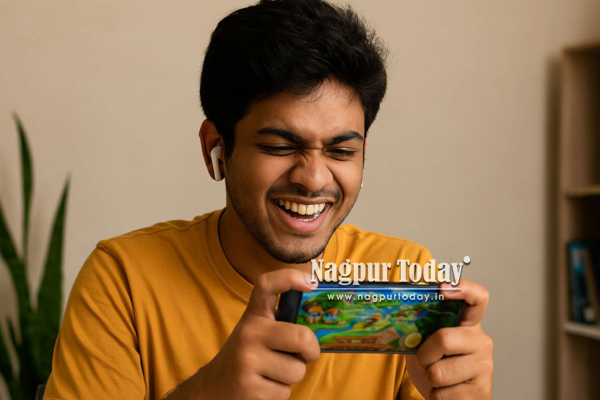
The digital revolution sweeping India has transformed the way young people spend their leisure time. While smartphones have become more affordable and the cost of data has plummeted, mobile gaming has transcended a casual time-waster to become a cultural phenomenon. Young Indians in urban metropolises and rural villages are increasingly playing mobile games not only to entertain but also as communities for socialization, competition, and even livelihood. This shift reflects broader developments in the ways technology meets day-to-day existence in contemporary India, creating novel social processes and issues worthy of greater analysis.
1. Democratization Through Affordable Technology
Remember when gaming meant expensive consoles or computers? That world barely exists in India today. The mobile gaming boom rides on the back of budget smartphones that have crashed price barriers while delivering surprisingly decent gaming performance. Brands like Redmi and Realme sell phones for under ₹10,000 that can run most popular games smoothly enough—unthinkable just five years ago. Then came the Jio earthquake of 2016. Overnight, data prices collapsed from about ₹250 per GB to below ₹15. Suddenly, the teenager in Gorakhpur could download and play the same games as someone in South Delhi. Sure, the Delhi kid might have a fancier phone with better graphics, but both can participate in the same gaming universe—something console gaming could never achieve across India’s economic divides. This isn’t just about more people playing games. It’s about who gets to play. The engineering student in Kota plays BGMI between study sessions. The delivery boy in Bengaluru competes in Free Fire during break time. The schoolgirl in Patna plays casual games on the same budget phone she uses for online classes. Gaming isn’t just accessible—it’s becoming universal.
2. The Economic Dimension: From Entertainment to Opportunity
“My cousin earns money playing games on his phone,” says practically every Indian teenager at some point these days. The explosion of real money earning games has introduced a complicated economic dimension to what was once purely entertainment. Teen conversations increasingly include discussions about platforms where winning matches translates to actual rupees in your Paytm wallet. These economic aspects manifest across a spectrum. At one end, casual puzzle games offer tiny rewards—maybe ₹5 for completing challenges. At the other extreme lie professional esports tournaments where top BGMI teams compete for prize pools reaching lakhs of rupees. Between these poles exist countless tournament platforms like MPL and WinZO that dangle moderate cash prizes before millions of hopeful players.
For some urban youth from supportive families, gaming has indeed opened career paths unimaginable to previous generations—professional players, streamers, content creators, and team managers. Yet, reality remains stubborn: significant earnings flow to very few. Meanwhile, millions play with economic hopes that mostly go unfulfilled, sometimes neglecting studies or conventional career development in pursuit of gaming success that statistics suggest will likely never materialize.
3. The Social Fabric of Virtual Communities
The social architecture built around mobile games has created community structures that would baffle previous generations but feel entirely natural to today’s youth. These aren’t just games; they’re social ecosystems. Players form squads and clans with elaborate hierarchies and membership rituals. They coordinate through WhatsApp groups that buzz constantly with game strategy, shared memes, and life updates completely unrelated to gaming. Discord servers hum with voices of teenagers strategizing raids or simply chatting about school problems while playing. What makes these communities fascinating is how they sometimes transcend India’s stubborn social divisions. A Brahmin college student from Bangalore might team up regularly with a Muslim mechanic’s apprentice from Lucknow, their religious and caste differences irrelevant compared to their in-game skills and reliability. Yet these spaces aren’t perfect utopias either—they develop their own hierarchies based on skill, equipment (which costs money), and often English fluency, creating new forms of inclusion and exclusion that reflect and sometimes reshape traditional social boundaries.
4. Regional Language Revolution and Cultural Adaptation
Remember when every mobile game assumed you understood English? That era is fading fast. Game developers have finally recognized that India’s gaming millions are more comfortable in Hindi, Tamil, Telugu, and other regional languages. Major titles now feature interfaces and content in multiple Indian languages—not just Hindi—acknowledging linguistic diversity that shapes how comfortably players engage with content.
Beyond mere translation, games increasingly incorporate elements specifically designed to resonate with Indian players. Garena Free Fire offers Diwali-themed character outfits. Local developers create games featuring cricket mechanics that reflect street cricket realities rather than international rules. Mythological characters from Indian epics appear as game protagonists with powers reflecting their traditional attributes.
This cultural adaptation runs deeper than surface aesthetics. Games like Teen Patti and Rummy digitize card games played during family gatherings for generations. Even gameplay mechanics sometimes adjust to Indian preferences—shorter match options for players dealing with an inconsistent power supply or family obligations that might interrupt longer gaming sessions. This evolution marks gaming’s transition from imported novelty to culturally integrated entertainment form, increasingly reflecting specifically Indian sensibilities rather than merely adopting global formats.
5. Parental Perception and Generational Conflict
“Put that phone down and study!” echoes through households across India, capturing the tension between gaming youth and parents who view smartphones primarily as educational tools or dangerous distractions. The generational disconnect fuels daily conflicts as parents struggle to differentiate between different types of screen time or understand gaming’s social dimensions. For the average Indian parent who grew up when academic performance singularly determined life outcomes, time spent gaming represents pure opportunity cost against exam preparation. Their anxiety intensifies when they glimpse news headlines about “gaming addiction” or hear about a neighbor’s child who supposedly failed exams due to PUBG obsession. Without personal experience of digital gaming, they lack frameworks to distinguish casual enjoyment from problematic usage. Young gamers develop sophisticated counter-strategies—gaming during specific hours when parental supervision decreases, positioning certain games as “skill development,” emphasizing potential earnings, or simply becoming experts at quickly switching screens when footsteps approach. Educational institutions mostly reinforce parental concerns, with schools implementing smartphone bans and anti-gaming messaging that often lack nuance or understanding of youth digital culture. The resulting dynamic pushes gaming into hidden spaces rather than creating frameworks for balanced engagement that might better serve young people’s actual needs.
6. Gender Disparities in Gaming Participation
The gendered experience of mobile gaming in India reveals persistent social constraints on female leisure and technology access that manifest even in supposedly modern digital spaces. The statistics tell part of the story—depending on the game genre, male players outnumber females by ratios ranging from 3:1 to 9:1. But numbers alone miss the qualitative differences in how young women experience gaming. Many adopt male or neutral usernames to avoid harassment. Voice chat becomes a minefield where revealing a female voice often triggers unwanted attention ranging from awkward flirtation to outright abuse. Some play exclusively with pre-selected friends rather than risking random teammates. These trends reflect broader social realities. Girls have less free time due to household responsibilities not equally shared with brothers. Parents exert closer control over daughters’ telephone usage and social activity. Even when physical access is open, social messaging that games are not “for girls” puts inner barriers to use. Even in the presence of these barriers, female usage rises progressively, particularly in casual game genres. Some of the most popular female streamers and professional gamers have emerged as role models, gradually transforming attitudes towards gaming as a legitimate activity for young women in spite of continued structural obstacles.
Conclusion
Indian youth mobile gaming is not a flash in the pan but represents a deep shift in the way young people engage with technology, leisure, and each other. With increased smartphone saturation entering daily life, games transcended simple forms of entertainment and have become high-order social worlds that deeply impact young people’s culture and coming of age. The trend addresses uniquely Indian forces—rapid growth subject to infrastructural constraints, financial ambitions moderated by realistic limitations, and traditional beliefs facing abrupt technologically driven development.
















